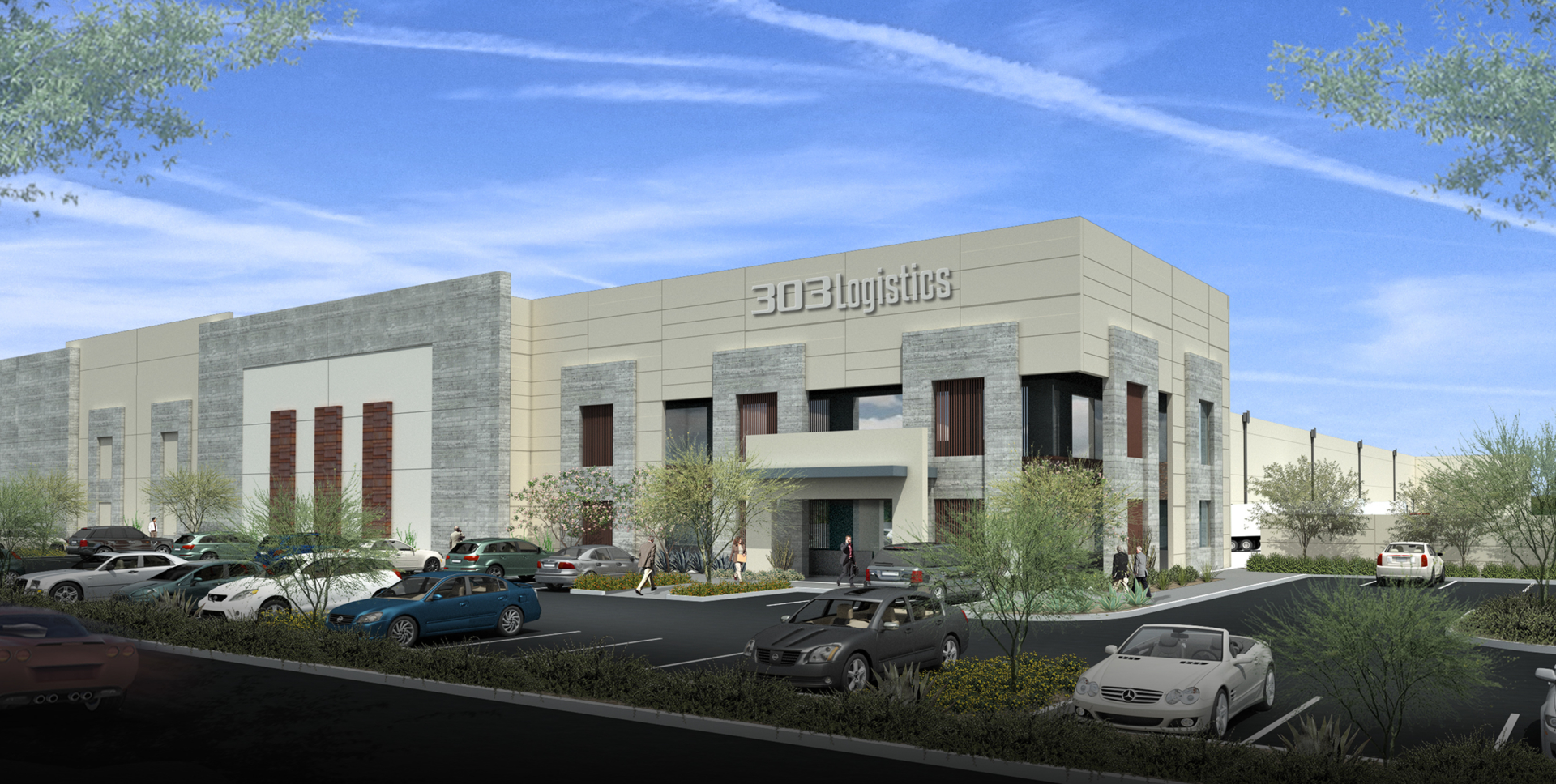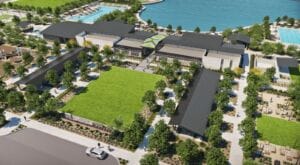There may not have been a lot to be excited about in 2020, but for the professionals who do business in the industrial commercial real estate sector, 2020 was an “unbelievable” year and 2021 is shaping up to be just as strong. The Greater Phoenix industrial market is one of the most active in the entire United States, driven by logistics and warehousing operations, but also new manufacturing facilities are coming online at a rapid rate. Steve Larsen, managing director at JLL and a market leader in the industrial arena, sat down with AZRE Magazine as 2020 was winding down to reflect on what was positive news from the past year and to look ahead at just how much more industrial development the market might see in the next two or three years.
AZRE: How would you sum up the industrial sector’s performance in the Phoenix market during our wild 2020?

Steve Larsen: I can sum up this year’s Phoenix industrial market performance in one word: Unbelievable. From projects that have landed to projects in the pipeline, we are experiencing net highs for absorption and new construction. Barring any other world-changing events, I expect industrial growth to continue in Phoenix for years to come.
AZRE: What kind of momentum does the Valley carry into 2021 in terms of attracting industrial product users and developers?
SL: Phoenix is a pro-business atmosphere and a right-to-work state with a low cost of living, ample land, a highly educated workforce and a great quality of life. These advantages are attracting companies from tier 1 markets like never before. In high-tax, high-regulation markets like New York, New Jersey and California, you might even classify it as a mass exodus.
We’re also benefiting from a resurgence of nearshoring and reshoring. The pandemic has proven the pitfalls of a single-supplier system for things like technology, pharmaceuticals and telecommunications. That is pushing the landscape of the Phoenix industrial market with companies looking to rebuild a U.S. presence. It is also increasing focus on Mexico – one of our largest and certainly most adjacent and prolific trade partners.
Millions of square feet of spec industrial space is being delivered in metro Phoenix over the next 10 to 12 months to meet this demand. There’s little doubt that these large footprints will be consumed by the many different groups migrating to our market.
AZRE: What submarkets do you expect to draw the most industrial development/leasing activity?
SL: The West Valley is a market leader – not only locally but also regionally and even nationally. It has attracted a large influx of major users very quickly and it has a long runway for more growth.
Looking ahead, I also see tremendous potential for the Southeast Valley, and the Phoenix-Gateway Airport market in particular. That submarket has traditionally attracted a smaller tenant profile but that scale is increasing notably. Leases in the 15,000- to 50,000-square-foot range used to be the Southeast Valley’s bread and butter, but leases of 50,000- to 100,000 square feet and higher are now commonplace. As the metro Phoenix economy continues to diversify, we’re seeing users ready to absorb larger Southeast Valley industrial footprints as soon as we build them.
As an example, our team is currently marketing approximately 500 acres of DMB-owned industrial land in Eastmark, between Ellsworth and Signal Butte roads, along Elliott Road. On that land alone we have had tremendous interest from multiple Fortune 100 companies looking at hundreds of acres for large-scale industrial or data center-type product.
AZRE: Are there any submarkets that could surprise the experts and see an uptick in industrial product activity?
Steve Larsen: We should be keeping an eye on the new 22-mile Loop 202/South Mountain Freeway extension. Our JLL industrial teams have deals brewing there and I know of other broker colleagues who do as well. The extension was designed to create synergy between the East and West Valleys. It is untested and unproven, but as a corridor it has everything you look for in an industrial site, so time will tell.
AZRE: The general public is usually several months behind in getting news of major industrial deals or announcements, so without giving out any secrets, are there things shaping up to make 2021 another strong year for the industrial market?
SL: It is no secret that Phoenix is attracting a valuable mix of e-commerce, food and beverage, high tech manufacturing, medical device and aerospace and defense entities. That is a perfect combination that will continue to grow our population and labor force, our corporate occupiers and our economy as a whole.
The recent large announcement of Taiwanese Semiconductor Manufacturing Company (TSMC) purchasing approximately 1,128 acres close to the I-17 and Loop 303 interchange for a $12 billion factory will create a ripple effect for supporting vendors throughout the Valley.
AZRE: How much longer do you expect the industrial market to remain the “Belle of the Ball” in Greater Phoenix?
SL: I don’t foresee any factors that would significantly detract from the success of Phoenix’s industrial product. Just one example is the continued shift away from traditional bricks-and-sticks retail and toward e-commerce platforms. Target’s e-commerce sales increased 154 percent during the third quarter, compared to the same time last year. While a lot of that activity can be assigned to the pandemic, it none-the-less represents a shift in buying patterns that we expect to stick around even after the pandemic recedes. That will give Phoenix a solid 24 to 36 months of industrial market growth. I expect even longer.




